Shoshone Geyser Basin, North Group
Page 1 2
Strangely, just as little as South Group is the southernmost group of Shoshone Basin, North Group is the northernmost. These are Bog Spring Group and Yellow Crater Group. However, in terms of number and density of active geysers the North Group ranks far above all others. Each visit may take you into a real wonderland of geysers, with many features around you erupting at the same time. More than 20 geysers have been counted here, most of them considered as worthy to carry a name, which does mean a lot for such a seldom visited area. As with South Group, a trail within North Group is unrecognizable. Therefore, in this report about a visit in August 2015 I will describe the location of features not with regard to a trail. (Update: Unfortunately, as with all other thermal groups west of Shoshone Creek, the North Group has been closed to public entry since 2016).
If you enter North Group from the south, cluster SNGNN001 is the first feature you come across. It consists of three shallow pools encircling two slightly elevated bowls in center. We saw both central bowls perpetually playing up to a height of 30 cm (one foot).
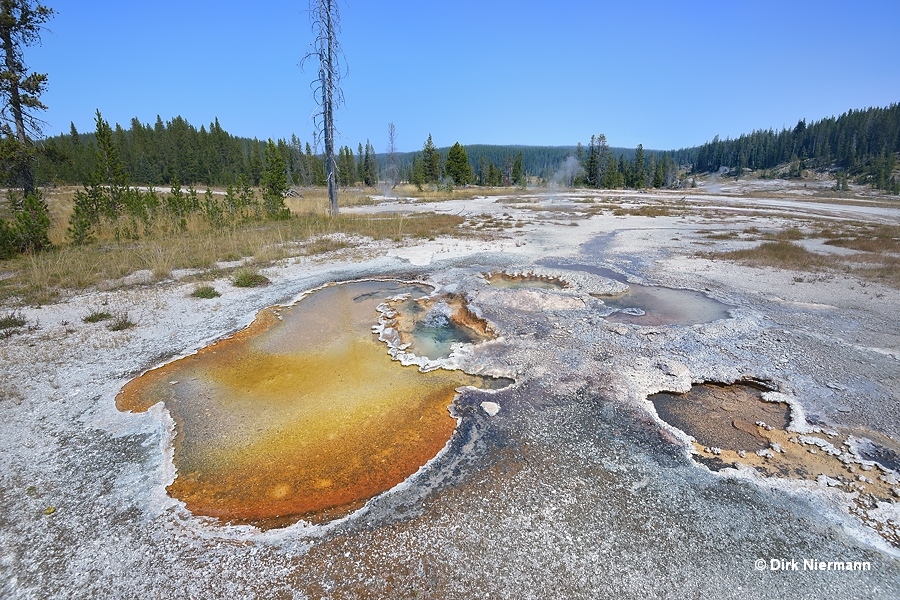
30 m (33 yards) east of SNGNN001 and nearly half way between Blue Glass Spring and Velvet Spring, a cluster of vents called "The Hydra" is located. Significant spouting activity up to a height of 5 m (15 feet) emerged not until the early 2000s. Unfortunately, The Hydra did not play for us. All the more we were happy to witness eruptions of Velvet Spring, which is known to undergo long dormancies.
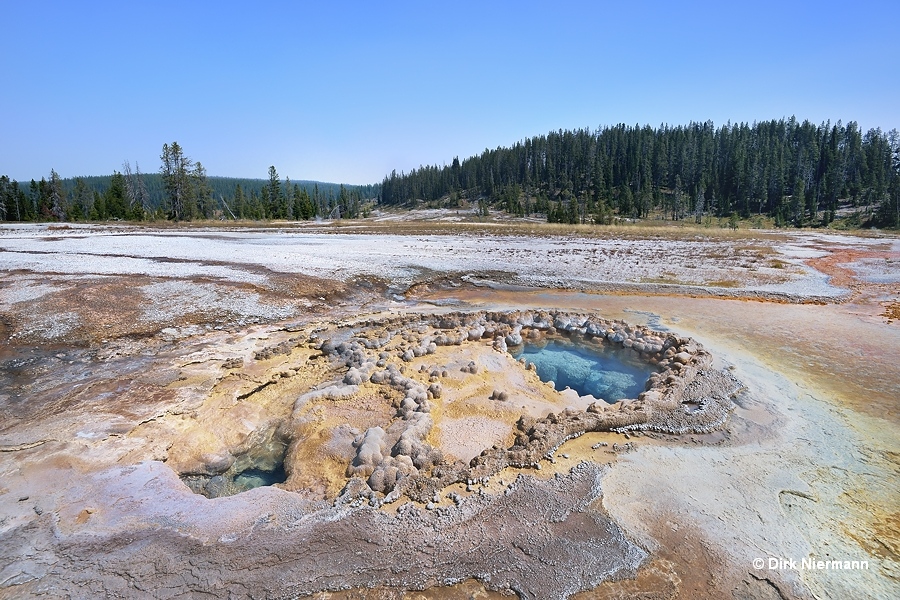
At best the main pool to the east may reach eruption heights of 6 m (20 feet) and the western vent even a tad more, but we found Velvet Spring not in that good form. The play lasted around two minutes and it took approximately 15 minutes until the geyser started over again. This way, periodical hissing of Velvet Spring became a kind of "background music" during our stay.
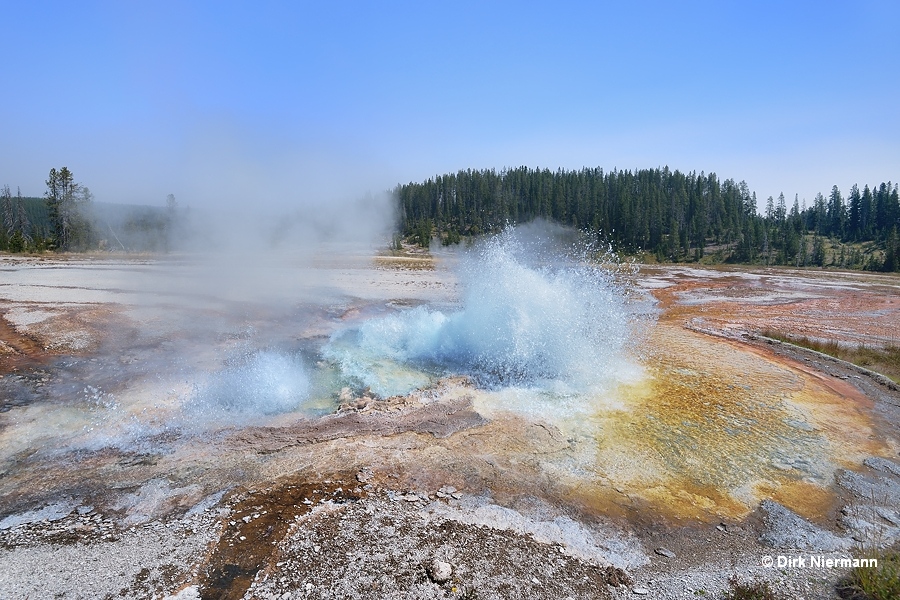
Some feet west of Velvet Spring and north of SNGNN001 a group of features around Fissure Spring shows up. A small pool west of it is called Snail Geyser (SNGNN004). Fissure Spring and Snail Geyser are always erupting together, but only a few feet high.
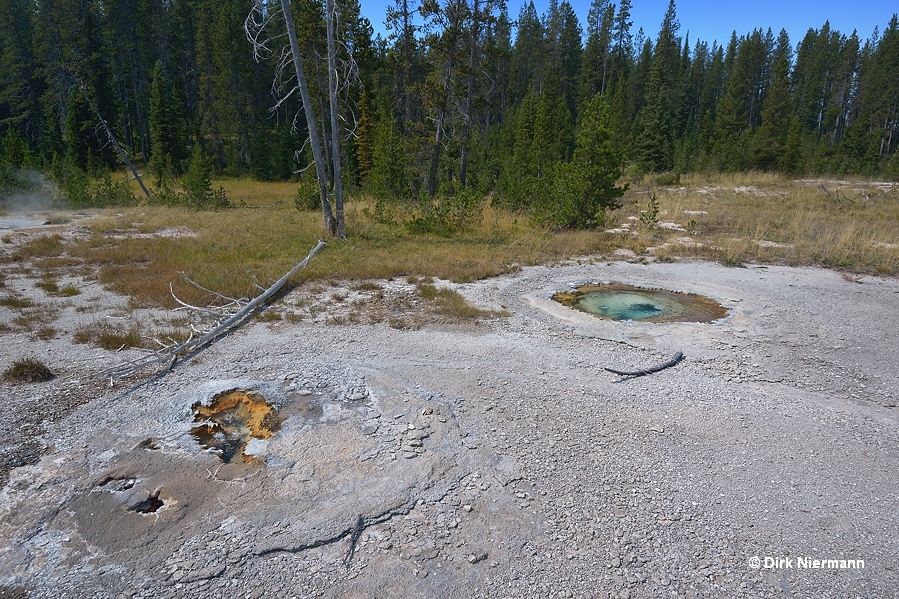
Unfortunately, I haven't found any information about the activity pattern of the small spouter SNGNN006 east of Fissure Spring. It is definitely an intermittent activity, since it was erupting from two vents when we came and quit a short time thereafter. Later on, while leaving the area, we noticed that it was playing again.
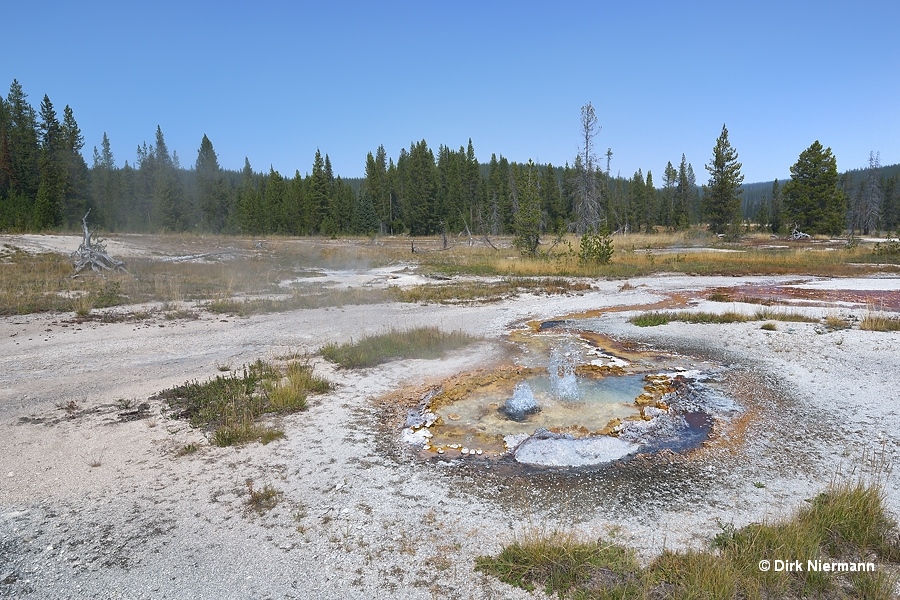
Next, a cluster around Yellow Sponge Spring adjoins north. We saw Yellow Sponge Spring erupting up to a height of 1 m (three feet) above the surrounding ground level, but it sent out only a few single bursts of that size over a time period of more than one hour, so I was not successful in capturing one in a picture.
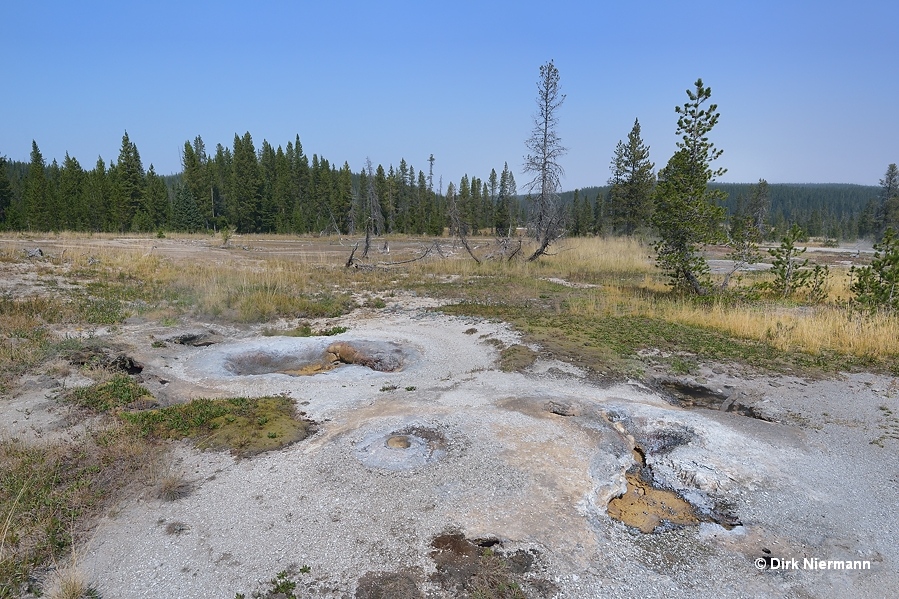
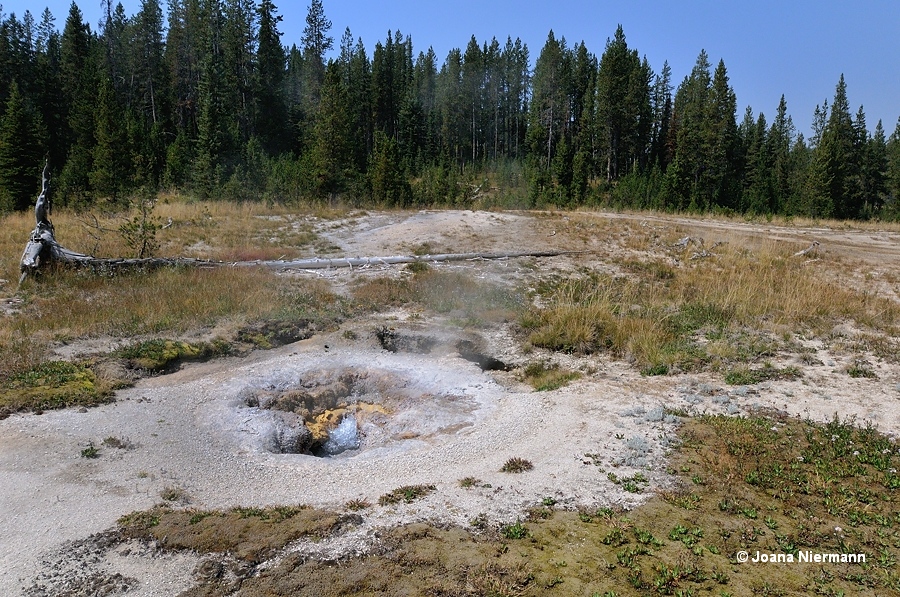
From Yellow Sponge Spring it is a distance of 30 m (33 yards) to the westernmost feature of the North Group, Glen Spring. On your way to Glen Spring you come across Brown Sponge Spring and Chocolate Geyser next to it. Both are playing only around 30 cm (1 foot) high, but while Brown Sponge is active every few minutes, Chocolate Geyser is a very rare performer. It leaps to the eye that Sponge Spring's lining, compared to Chocolate Geyser, matches the color of chocolate much better.
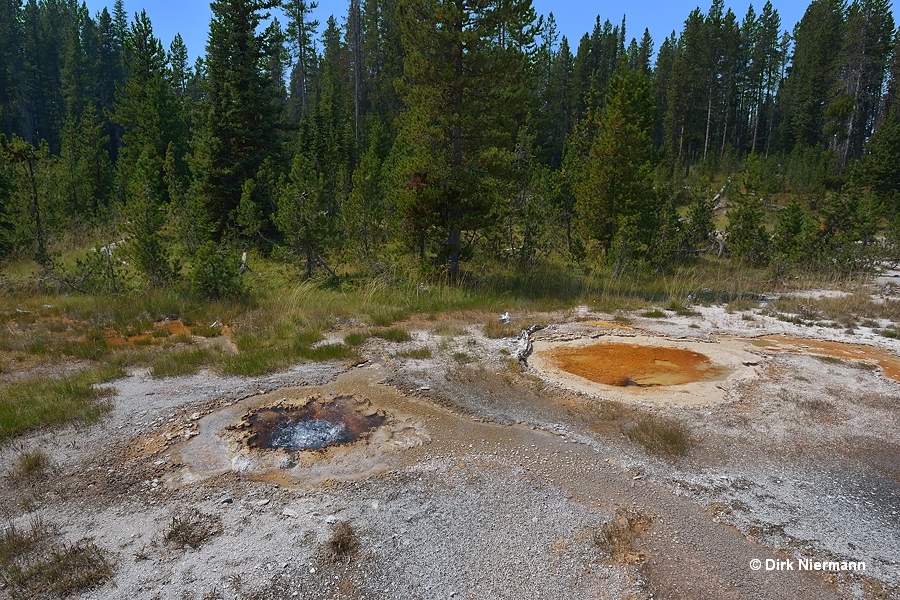
Glen Spring is a bit separated from the other features and semi-enclosed by forest. It is capable of spouting up to 1.5 m (5 feet), but the erratic activity seems to be rare.
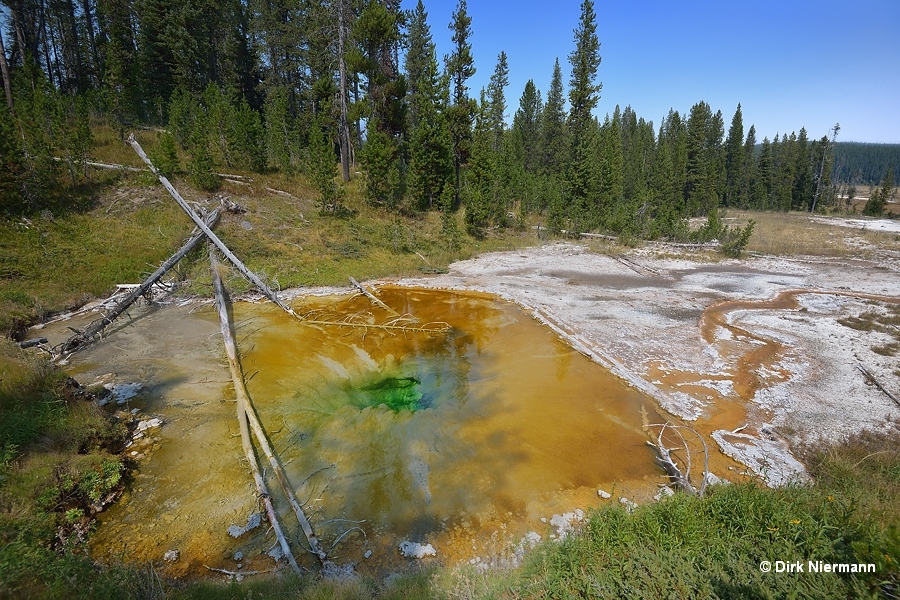
We are moving on to the center of North Group, where Small Geyser is a prelude to the group's most significant geysers east of it. Small Geyser is very frequently active, but reaches only a few feet height.
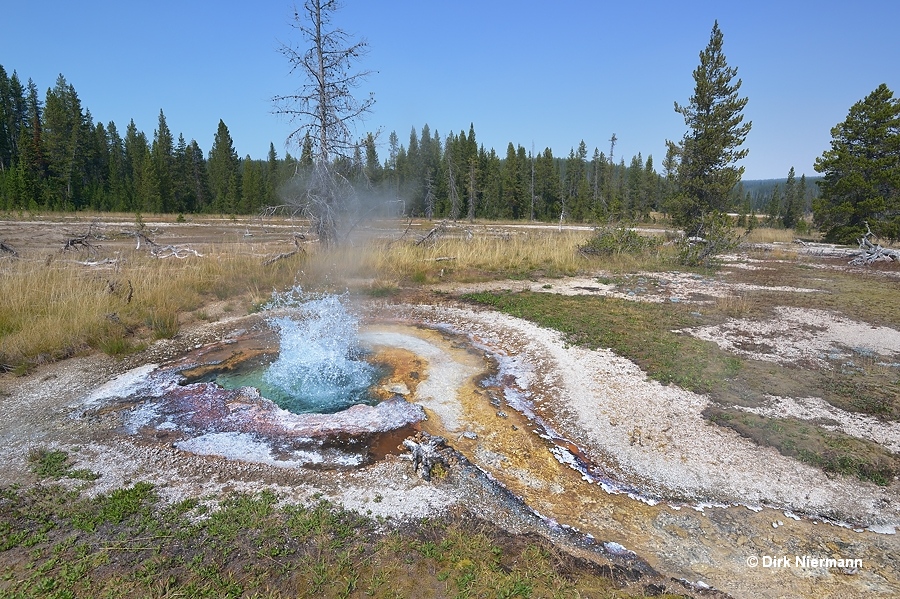
To our surprise the uniquely shaped spring SNGNN008 next to Small Geyser showed intermittent spouting, too. The interval was only in the range of a few seconds, though. This deep seated spring is bridged by two sinter arches, forming a grotto with three entrances. There are two active vents within the spring, as to be seen in the first photo if you look very closely.
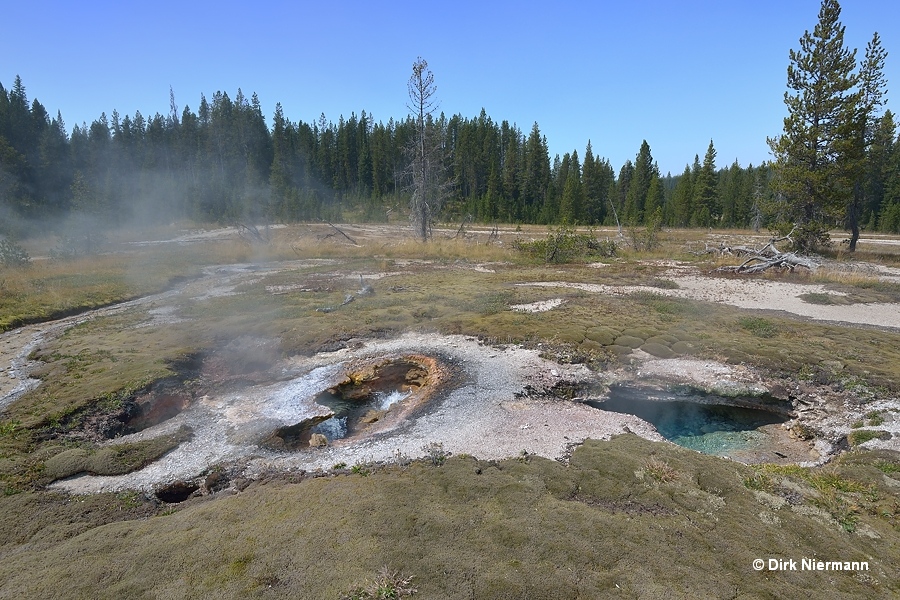
In the second photo the two spanning arches become better recognizable. It's a little surprising that a spouting feature of such extraordinary composition is not named.
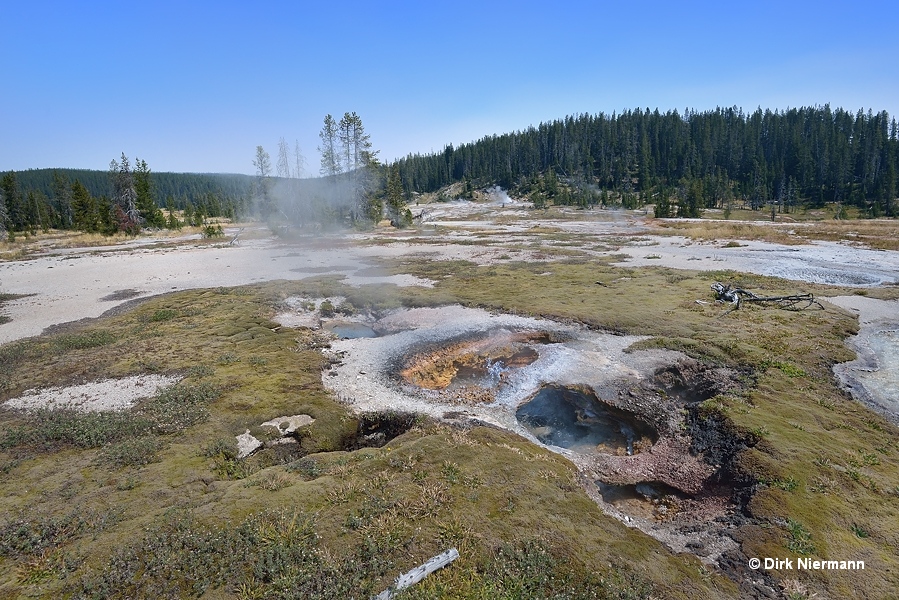
Page 1 2